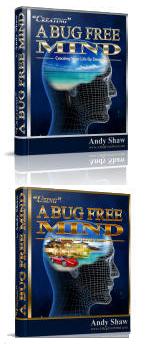A little while ago on the BunkaiJutsu Facebook page, I put on the following quote by Gichin Funakoshi:-
“When there are no avenues of escape or one is caught even before any attempt to escape can be made, then for the first time the use of self-defence techniques should be considered. Even at times like these, do not show any intention of attacking, but first let the attacker become careless. At that time attack him, concentrating one’s whole strength in one blow to a vital point, and in the moment of surprise, escape and seek shelter or help. It is most important to be on guard without becoming excited and to act with presence of mind throughout the situation from the beginning and even once the situation is in hand.
When delivering the one blow against the attacker, the importance of using one’s whole strength and being especially accurate cannot be overemphasized”.
Gichin Funakoshi, from his book Karate-Do Kyohan,
It generated quite a bit of interest and comment, so I thought I’d explore it a bit further. What is easy to over-look here is that it shows a very different ethos and approach to how we are taught in most traditional martial arts today.
Today if we do any sparring, we face each other from outside of striking range, bow, take up our fighting stance, then start inching towards each other until we start to exchange strikes/kicks. Basically, its all about having a “fair fight”. It’s sport.
Even when we practice bunkai (applications) against more street style attacks such as haymakers, in most clubs, the attacker usually start out of striking range first, then moves into distance with the haymaker. Again, this partially reflects the “fair fight” mentality; as if two guys have agreed to “step outside and sort it out”.
Note, I did say “partially” as I do realise that somebody could randomly swing at you, ready or not.
Even in that step outside scenario there is the concept of an even one on one fight. I know it’s not always adhered to as one may pull out a weapon or mates my join in, but the concept is still there, and most traditional training seems to buy into it.
What most traditional martial arts do not train for the guy being right up in your face shouting and swearing, then head-butting you.
The old Okinawan masters did not practice sport. Several of the old Okinawan masters are recorded as saying that Karate is mainly for defending oneself against untrained thugs (rather than matches with other trained martial artists).
Funakoshi always taught that fighting (even a “fair fight”) was wrong and should be avoided if at all possible. He taught that Karate was mainly to make you a better person rather than a better fighter and as such if you were set about, he advised that the first course of action should be to run away. That way nobody gets hurt.
On the few occasions that Funakoshi was forced to physically defend himself, he felt that it was a personal failure to have gotten into that situation in the first place, or for not having handled it better. I personally think he was a bit hard on himself, but that’s just my opinion.
So if you hold true to the philosophy that you should decline any fights and run away if you can, then what do you do if you are cornered and have to fight whether you like it not? The person picking on you is usually doing so because he/she thinks you are an easy target. Are they looking for a fair fight?
No! They’re looking for an easy victim.
So should you be expected to fight fair against somebody like that?
No, you should have to, because you shouldn’t be put in that position against your will. You didn’t pick the fight and you didn’t agree to have one. Self defence is about defending yourself from harm, it is not about having a fair fight.
 Should you step back into your fighting stance and warn them, “back off, I do martial arts”?
Should you step back into your fighting stance and warn them, “back off, I do martial arts”?
No. That warns them to be more careful.
This is the scenario Funakoshi was talking about. Let them bluster at you and become over confident, then hit them with a pre-emptive strike to a vital point. Then run!
This is the way that modern Reality Based Martial Arts train. Don’t you find it a bit strange that people talk about Reality Based Martial Arts as if it is still quite new, when Funakoshi was talking about it decades ago?
To my mind, it suggest that most of today’s so called “traditional martial arts” are not that traditional. It isn’t what Funakoshi taught!




